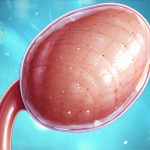Histamine is often thought of in relation to allergic reactions – sneezing, itchy eyes, hives. However, it’s so much more than that; it’s a crucial signaling molecule involved in countless bodily functions, from digestion and sleep-wake cycles to immune response and even neurotransmission. When the system designed to regulate histamine becomes overloaded or compromised, it can lead to what is known as histamine intolerance – a condition where histamine accumulates in the body, causing a wide array of seemingly unrelated symptoms. These symptoms often mimic allergies but differ in their presentation and underlying cause, making diagnosis challenging. Many individuals experiencing chronic bladder issues may not realize that histamine could be playing a significant role, leading them on frustrating diagnostic journeys seeking solutions elsewhere.
The connection between histamine intolerance and bladder dysfunction is complex and relatively underexplored, yet growing evidence suggests a strong link. Histamine receptors are present in the bladder itself, influencing its contractility, sensitivity, and overall function. An excess of histamine can directly irritate the bladder lining, increasing frequency, urgency, and even contributing to feelings of pain or discomfort. Furthermore, histamine intolerance often manifests with mast cell activation – essentially an overactive immune response where mast cells release excessive amounts of histamine and other inflammatory mediators. This systemic inflammation can further exacerbate bladder symptoms, creating a vicious cycle of irritation and discomfort. Understanding this interplay is key to exploring potential management strategies for those experiencing these troublesome issues.
Bladder Symptoms & Histamine Intolerance: A Closer Look
The spectrum of bladder symptoms potentially linked to histamine intolerance is surprisingly broad. While some individuals may experience classic overactive bladder (OAB) symptoms – frequent urination, urgent need to go, and occasional leakage – others report more atypical presentations. These can include a persistent feeling of pressure or fullness even after emptying the bladder, painful bladder syndrome/interstitial cystitis-like symptoms, or even hesitancy in starting urination. It’s important to note that these symptoms are not exclusive to histamine intolerance; they can arise from numerous other conditions. This is why accurate diagnosis and careful consideration of all potential contributing factors are crucial.
The underlying mechanisms connecting histamine and bladder function revolve around the histamine receptors found within the bladder wall. There are four main types (H1, H2, H3, and H4), each playing a different role. H1 receptors contribute to increased bladder contractility and sensitivity, potentially leading to urgency and frequency. H2 receptors stimulate acid production in the stomach but also influence bladder function indirectly through inflammation. When histamine levels rise due to intolerance, these receptors become overstimulated, triggering an exaggerated response within the bladder. This can manifest as heightened sensitivity – even small amounts of fluid trigger a strong urge to urinate – or increased involuntary contractions causing urgency and leakage.
Furthermore, mast cell activation syndrome (MCAS), often accompanying histamine intolerance, adds another layer of complexity. Activated mast cells release not only histamine but also other inflammatory mediators like leukotrienes and prostaglandins, further irritating the bladder lining and contributing to inflammation. This systemic inflammation can impact nerve function, potentially leading to chronic pain and heightened sensitivity. It’s a cascade effect where histamine intolerance initiates the process, MCAS amplifies it, and the bladder becomes caught in the middle. The result is often debilitating symptoms that significantly impair quality of life.
Identifying Histamine Intolerance & Its Role in Bladder Issues
Diagnosing histamine intolerance isn’t straightforward. There’s currently no single definitive test; diagnosis relies heavily on a combination of symptom assessment, dietary elimination trials, and sometimes, specialized testing to assess histamine levels or enzyme activity (DAO – Diamine Oxidase). DAO is the primary enzyme responsible for breaking down histamine in the body. Low DAO levels can contribute to histamine buildup, but measuring DAO levels isn’t always reliable as it reflects only a snapshot in time. A comprehensive medical history and detailed symptom tracking are often the starting points.
A key diagnostic tool involves an elimination diet, removing high-histamine foods for a period (typically 2-4 weeks) to see if symptoms improve. Common culprits include fermented foods (sauerkraut, yogurt, kombucha), aged cheeses, cured meats, alcohol (especially red wine), and certain vegetables like spinach and tomatoes. Reintroducing these foods one at a time can help pinpoint specific triggers. It’s vital to undertake this process under the guidance of a healthcare professional or registered dietitian to ensure adequate nutrition and avoid unnecessary restrictions.
However, it’s essential to differentiate histamine intolerance from histamine allergies. True allergies involve an IgE-mediated immune response, triggering immediate symptoms like hives or anaphylaxis. Histamine intolerance, on the other hand, is a consequence of the body’s inability to effectively break down histamine, leading to a buildup and chronic symptoms that are often more subtle and widespread. Understanding this distinction is critical for appropriate treatment approaches. If you suspect histamine intolerance may be contributing to your bladder problems, consulting with a functional medicine practitioner or allergist/immunologist familiar with these conditions can provide valuable insight and guidance.
Exploring Dietary Strategies for Bladder Support
Diet plays a pivotal role in managing both histamine intolerance and bladder health. As mentioned earlier, minimizing high-histamine foods is fundamental. Beyond that, focusing on a fresh, whole-food diet rich in anti-inflammatory nutrients can be incredibly beneficial. This includes incorporating plenty of fruits and vegetables (with some exceptions – see below), lean proteins, and healthy fats. Prioritizing freshness is crucial; histamine levels increase as food ages.
Some foods are naturally higher in histamine or promote histamine release, while others help support DAO enzyme activity. For example:
– Foods to limit: Fermented foods, aged cheeses, cured meats, alcohol (especially red wine), spinach, tomatoes, eggplant, avocados, citrus fruits.
– Foods to include: Freshly cooked meats and fish, most vegetables (excluding those above), leafy greens (in moderation), quinoa, rice, oats, olive oil, coconut oil.
Furthermore, certain nutrients support DAO activity and histamine breakdown. Vitamin C, copper, and vitamin B6 are all involved in the DAO enzyme’s function. Supplementing with these vitamins may be helpful for some individuals, but it’s essential to discuss this with a healthcare professional before starting any new supplements. Hydration is also critical, but avoid excessive fluid intake, which can further irritate the bladder. Understanding how to tell if your bladder is fully emptying is also important when managing hydration levels.
The Role of Gut Health & Inflammation
The gut microbiome plays a surprisingly significant role in histamine intolerance and bladder health. A healthy gut barrier prevents undigested food particles and toxins from entering the bloodstream, reducing inflammation. However, imbalances in gut bacteria (dysbiosis) can compromise this barrier, leading to “leaky gut” – increased intestinal permeability. This allows more substances to cross into the bloodstream, triggering immune activation and histamine release.
Addressing gut health involves strategies like incorporating probiotic-rich foods (kefir, sauerkraut – if tolerated), consuming prebiotic fibers to feed beneficial bacteria, and minimizing processed foods and sugar, which can disrupt the microbiome. Reducing inflammation is another crucial aspect. Chronic inflammation contributes to bladder irritation and exacerbates histamine intolerance symptoms.
Considerations for Medical Interventions & Support
While dietary and lifestyle modifications are often the cornerstone of managing histamine intolerance and its impact on bladder function, medical interventions may be necessary in some cases. Antihistamines can help block histamine receptors, reducing bladder spasms and urgency but they only address the symptom, not the underlying cause. However, it’s important to use caution with antihistamines as they can have side effects and may mask other underlying issues.
Other potential treatments include mast cell stabilizers – medications that reduce the release of histamine from mast cells – and supplements like quercetin and luteolin, which possess natural anti-inflammatory properties and may help stabilize mast cells. These should always be discussed with a healthcare professional before use. Ultimately, a holistic approach that addresses both histamine intolerance and gut health is often the most effective strategy for managing bladder symptoms and improving quality of life. It requires patience, persistence, and collaboration with informed healthcare providers to unlock personalized solutions. If you’re experiencing frequent or painful urination, it might be helpful to understand how hormone therapy may affect bladder infections. Additionally, consider whether exercise may affect your urinalysis readings if you are planning to engage in physical activity. Finally, remember that gluten may affect urinary symptoms.





















